81 F. average high on June 21.
82 F. high on June 21, 2013.
June 21 in Minnesota Weather History: Source: NOAA
1988: The sky was smoky across much of Minnesota due to wild fires during the '88 drought.
1919: 2nd most deadly tornado in Minnesota history hits Fergus Falls. 59 people died. Like the #1 killer tornado for Minnesota (St. Cloud), it struck on a weekend.
1917: Downpour at Grand Meadow. 4.98 inches fell in just less than a day. Corn crops were badly damaged by the water.

- Henry Paulson Jr, former Treasury Secretary (2006-2009) in an Op-Ed at the New York Times below.
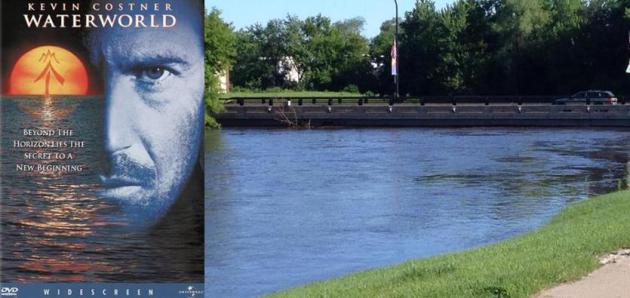
Weather 2.0
Some might call it job security, but it's getting to the point where I'm afraid to come to work and check the maps. From Polar Vortex to Waterworld, The Sequel. If Kevin Costner comes sloshing up to my door I'm putting my house on the market. What's next?
Another day, another sluggish, limping frontal boundary, igniting a new tropical treadmill of T-storms. Check. More red blobs on Doppler, capable of pushing us over the June 1874 rainfall record of 11.67 inches by Friday?
Yep.
And if my sons are reading this, no, your old man doesn't remember June, 1874. Note quite.
But some days I do feel like the proverbial canary in the coal mine. Are other meteorologists seeing what's happening? Am I just imagining slower jet stream winds? Upper level steering currents are sluggish and erratic, more prone to odd dips and detours that prolong the cold or the rain or whatever weather-weirdness comes next.
Growing up weather systems moved with consistent regularity. Storms and fronts still stalled, but not nearly as often. This feels different.
An inch of rain may fall from today's slow-motion frontal passage; another sluggish warm front sparks more downpours late week.
Me? I'm going fishing - in my basement, then feeding the mosquitoes.
Good luck out there.
* photo from Delano courtesy of Craig Mizzoute and Twitter.
1.03" additional rain predicted by Monday morning in the Twin Cities (00z NAM model).



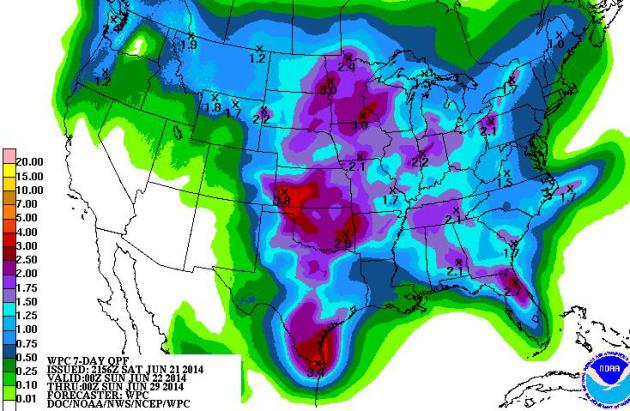




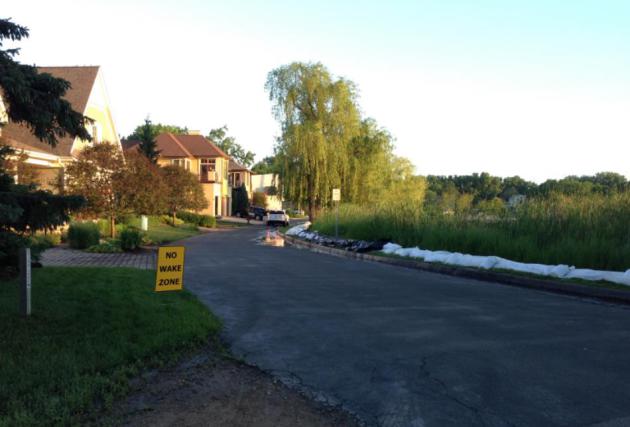
TODAY: Muggy, heavy T-storms likely. Winds: SW 8. High: 82
SUNDAY NIGHT: Lingering T-storms, locally heavy rain possible. Low: 66
MONDAY: Unsettled, stray shower or T-shower - but not as wet. High: 81
TUESDAY: Sunny start, few PM showers? Wake-up: 62. High: 79
WEDNESDAY: Some sun, nighttime T-storms. Wake-up: 59. High: 78
THURSDAY: Warm & sticky; spotty T-storms. Wake-up: 64. High: 84
FRIDAY: Hot sun, late-day pop-up storm. Wake-up: 68. High: 86
SATURDAY: Sweaty sunshine, lake-worthy. Dew point: 70. Wake-up: 70. High: near 90
* photo above: residents of Tonka Bay, near Excelsior on Lake Minnetonka were sandbagging yesterday, in response to the highest lake water levels ever observed.
Climate Stories...

The Coming Climate Crash. Is there an analog to the financial crash of 2008? Here's an excerpt of an Op-Ed from Henry Paulson Jr. at The New York Times: "...For
too many years, we failed to rein in the excesses building up in the
nation’s financial markets. When the credit bubble burst in 2008, the
damage was devastating. Millions suffered. Many still do. We’re making
the same mistake today with climate change.
We’re staring down a climate bubble that poses enormous risks to both
our environment and economy. The warning signs are clear and growing
more urgent as the risks go unchecked..."

Climate Change Puts The World's Energy Systems At Risk. Here's a clip from a story from The Guardian at Climate Central:
"Rising sea levels, extremes of weather and an increase in the
frequency of droughts and floods will all play havoc with the
world's energy systems as climate change takes hold, a new report has found.
Energy companies are more often cited as part of the problem of climate
change, generating the lion's share of the world's greenhouse gas
emissions, amounting to around 40 percent of the total. But they will
also suffer as global warming picks up pace, as generators - from
nuclear reactors to coal-fired power plants - feel the brunt of weather
changes..."
Photo credit above: "This
power plant in Nebraska was not operational when the Missouri River
flooded in 2011. If it was, the consequences could have been dire." Credit: Nebraska Power

Our Voice: Climate Change is Real. Here's an excerpt of an Op-Ed from The Palm Springs Desert Sun: "...The
effects of this change can be found in many ways. Joshua trees, the
iconic symbol of our national park, are slowly dying out in parts of the
park where young seedlings have become rare. Desert tortoises, lizards
and insects are vanishing from areas where they once thrived. Warmer
winters have allowed pine bark beetles to flourish, killing millions of
drought-stressed ponderosa and pinyon pines and increasing the severity
of wildfires. The water level at Lake Mead, the nation’s largest
reservoir, is dropping 1 foot a week. The lake is projected to reach its
lowest level on record next month. As California begins the summer of
its worst drought in a generation, it’s clear that its residents need to
live with less water..."

Photo credit above: "Climate change will cause the Siberian permafrost to thaw." Credit: Softpedia/Celsias.
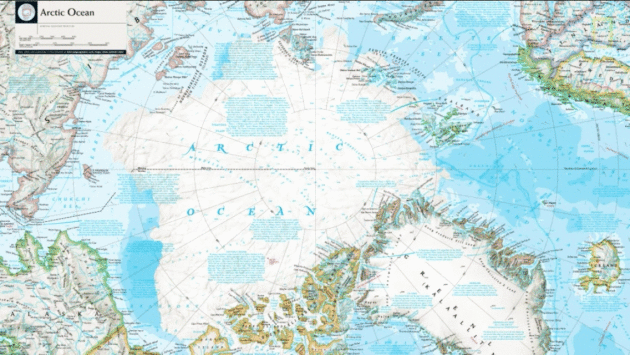
Shrinking Arctic Ice Prompts Drastic Change in National Geographic Atlas. Here's an excerpt from a story at National Geographic Daily News: "The
reduction in multiyear ice—commonly defined as ice that has survived
for two summers—is so noticeable compared with previous editions that
National Geographic Geographer Juan José Valdés calls it "the biggest visible change other than the breakup of the U.S.S.R." As the ocean heats up due to global warming, Arctic sea ice has been locked in a downward spiral. Since the late 1970s, the ice has retreated by 12 percent per decade, worsening after 2007, according to NASA. May 2014 represented the third lowest extent of sea ice during that month in the satellite record, according to the National Snow and Ice Data Center (NSIDC)..."
Image credit here.
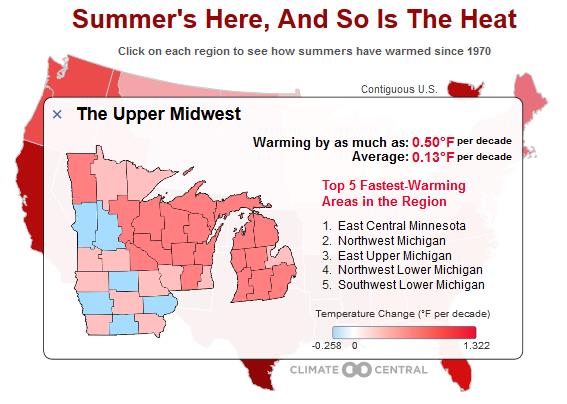

One can only imagine the level of damage that can leave through homes and real estate in general for miles and miles. One should only be astute and firm in standing their ground and asserting their rights, amidst everything. No one should have to succumb to nature, much less let it run over what is owed us, as unwitting victims of its floods and storms. No untenable insurance laws should get in the way, either.
ReplyDeleteCharlena Leonard @ Weidner Law
Natural calamities caused by climate change are inevitable. But you can always prepare beforehand, so that you could mitigate said damage. You could take note of home improvements that could lessen the chance of heavy flooding, and beef up your insurance to cover repairs and whatnot. In case your place was damaged by flood, typhoon, or landslides, it’s best to consult the pros for expert repairs and maintenance. Take care!
ReplyDeleteGail Wallace @ Water Damage Restoration